Today we went to Omaha Beach. We left Honfleur by shuttle this morning while it was still nearly dark with a light mist falling.

Our first stop, was at Arromanches-les-Bains, an important seaport town during World War II. Notice the black clouds there, a sign of things to come.

Here we met our guide for the day, Lucy, who gave us great detail on Operation Overlord which was two years in the planning.

She explained the tactics that went into convincing the German army that forces were gathering at Dover for an attack across the narrowest part of the Channel. This deception included the development of huge Macy’s Thanksgiving parade-type balloons that appeared to be tanks in aerial photographs. She pointed out the five beach areas that were actually chosen including Sword, Juno, and Gold beaches and Omaha and Utah beach where the American forces would land. Three conditions were required for the attack: low tide so barbed wire and other obstacles on the beach would be exposed, a full moon so soldiers could see the obstacles, and early morning fog at sea so the landing boats would not be easily visible.
We walked by a remaining section of the anti-tank wall built by Rommel at Arromanches.

Then walking out of town, we passed a small machine gun bunker.
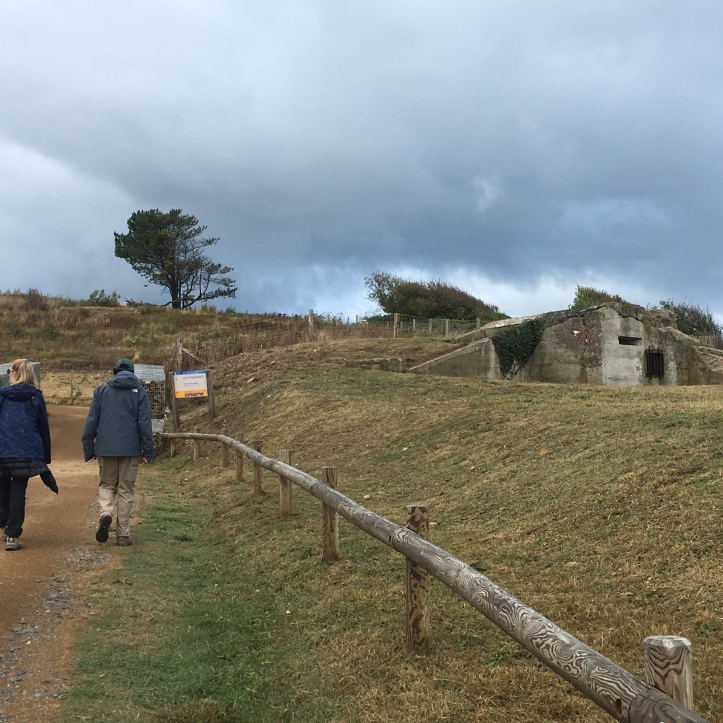
She told us that the bunkers built by the German army were solid and very hard to destroy, and that 95 percent still exist today. The French frequently use them to store vegetables and as wine cellars. We were now close to the top of the hill where we would be able to see the harbor at Arromanches better.

Arromanches became important as an artificial port. The Allies realized they would need a deep-water port to support the landing of additional troops as well as supplies and weapons for the army. They could not use any of the natural ports, however, because they were too well defended by the German army so Churchill suggested the creation of an artificial port. Large concrete blocks that were hollow inside and could therefore float, were constructed weighing several thousand pounds each, and were towed at three miles an hour across the English channel. They needed this harbor in place within a week after the initial attack so the towing process also started on June 6. The blocks were used to create walls and piers that defined what became known as Mulberry Harbor; some of these blocks are still in evidence along the coast.

A photo from when the harbor was in operation.
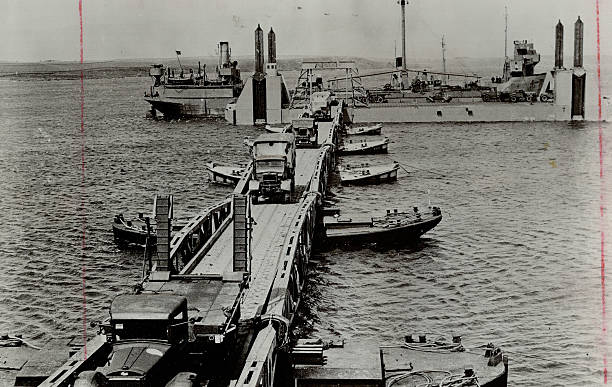
A million men came in as well as supplies during the six months the port was in existence. A second such port – Mulberry B – was constructed further south of Omaha Beach, but was destroyed by a severe storm only a few days after it was in operation.
Back in our shuttle, we traveled a short distance through the rain, then stopped for lunch.

Lunch was a very large portion of quiche with salad and French fries.

We waited for the heaviest rain to stop, then started walking down to Omaha Beach.

We looked down the long stretch of sand toward a cliff.

We also turned and looked inward toward the hills the Americans needed to get past. There was a sea wall here then, no houses, and trees and other thick brush with limited paths leading upward.

Our guide, Lucy, explained the attack plan which included early morning bombing to take out the machine guns and other artillery that was hidden in the brush, but the bombs overshot their target and the guns were still in place. The landing plan then called for engineers with metal detectors to lead the way, locating and destroying mines as well as cutting pathways through the barbed wire on the beach. Most of the engineers, however, were killed by the unexpected heavy barrage of machine-gun fire. This led to the difficulty the soldiers who were arriving in waves of 1,000 every seven minutes had, in trying to find their way off the beach. After three hours of fighting, naval destroyers were positioned such that they could shoot over the army and destroy many of the German artillery positions. The remaining landing force was finally able to gain a 1 1/2 mile foothold from the beach that day. A total of 10,000 Allied forces were killed on June 6, 1944, and 3,500 were Americans on Omaha Beach. Walking where all this happened, you could sense that something elemental had gone on here.

Lucy explained to us that Omaha Beach is not considered by Europeans as just a battlefield, but is seen as a place where eighteen and nineteen-year-olds who likely had never seen movies or pictures of war, who were 5,000 miles from home, who had never met any of the people they were fighting for, and who perhaps had not seen any action before this, stormed the beach and they did it for the cause of freedom. And that’s why the American Cemetery is visited every year by Frenchmen, Spaniards, Italians, Belgians, Englishmen, etc. When we drove through the small towns near the five beaches that were targeted in Operation Overlord, each had American flags out, as well as photos and stories of American soldiers posted in honor of the 75-year-mark this past June.

After a somber walk along the beach, we begin climbing towards the American Cemetery.

Our path went up from the beach, and we could have driven, but it was meaningful to walk there.

At the top of the first hill we arrived at more steps that went up from the beach.

And at the top of the steps was a monument to the U.S. First Infantry Division with the names of those who did not survive that day.

This was also on the monument.
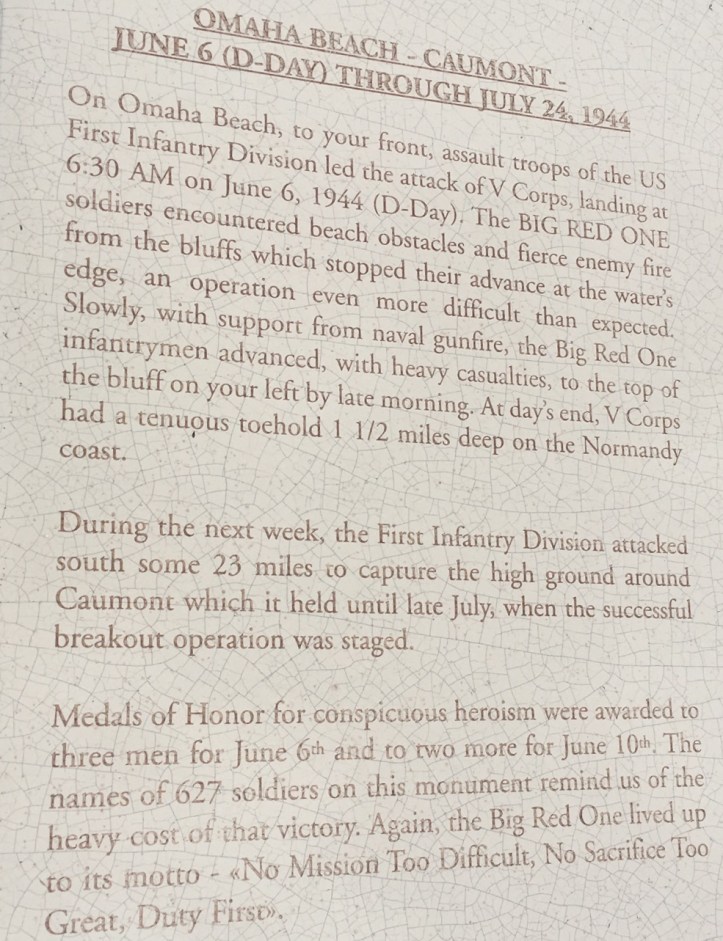
The walkway to the cemetery was tree-lined and quiet.

Lucy explained that to be buried here you had to be an American who was killed in action and whose family approved the burial. More than 9,000 American soldiers are here.

At this point we said farewell to Lucy and wandered around on our own.

We saw a marker for an unknown soldier,

and many for those who died on June 6.

I also saw three Italian gentlemen visiting the cemetery.
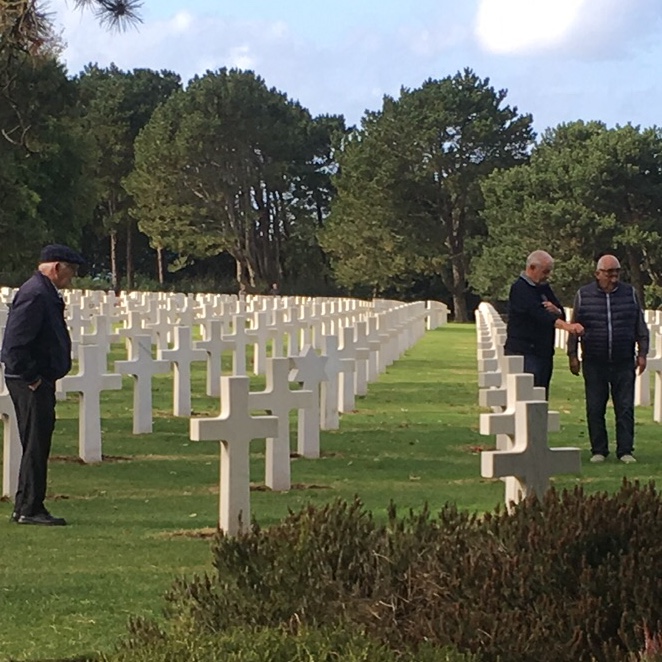
This small building held the flags of the Allies involved in D-Day.
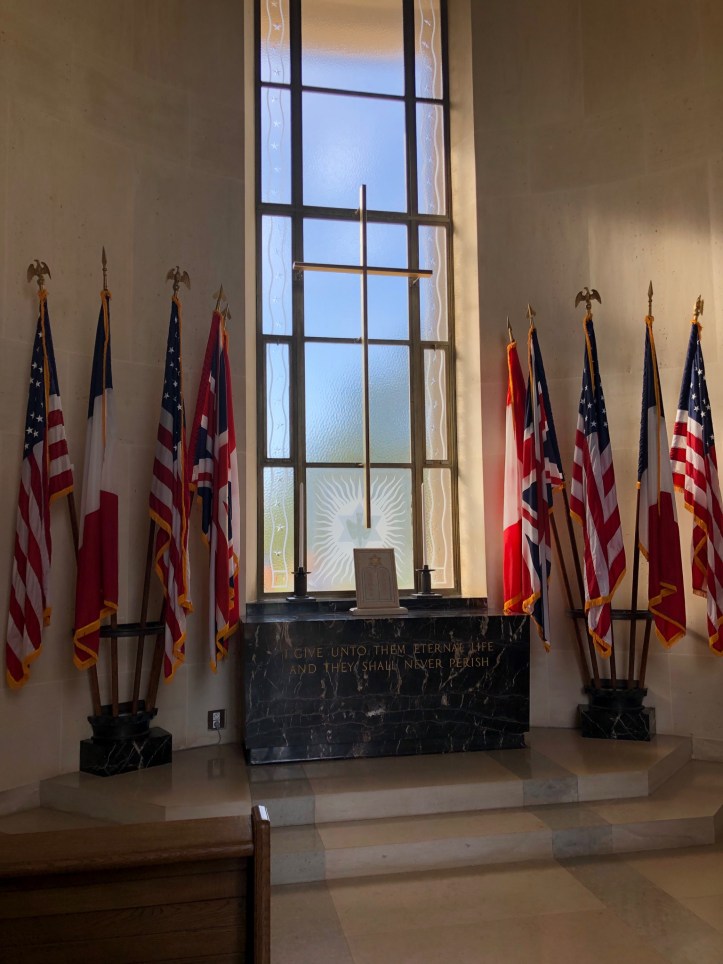
This was also on the wall of that building.
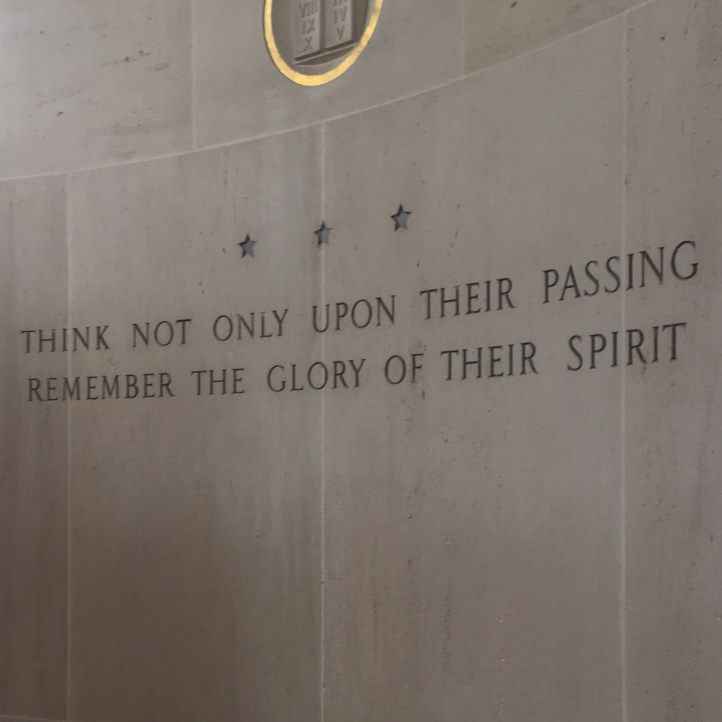
At one end of the cemetery was this bronze statue called “The Spirit of American Youth.” It portrays a young man leaping into the air.
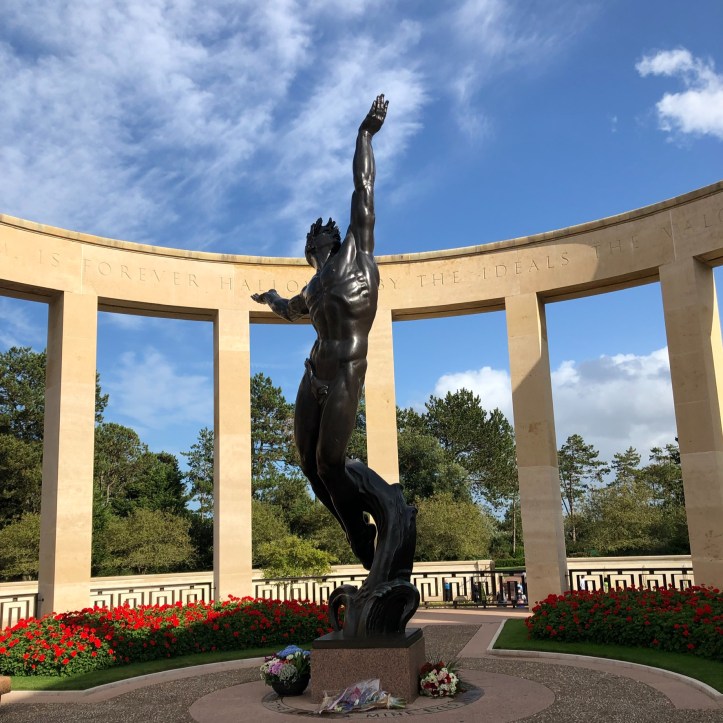
And this engraving is around the base of the statue.
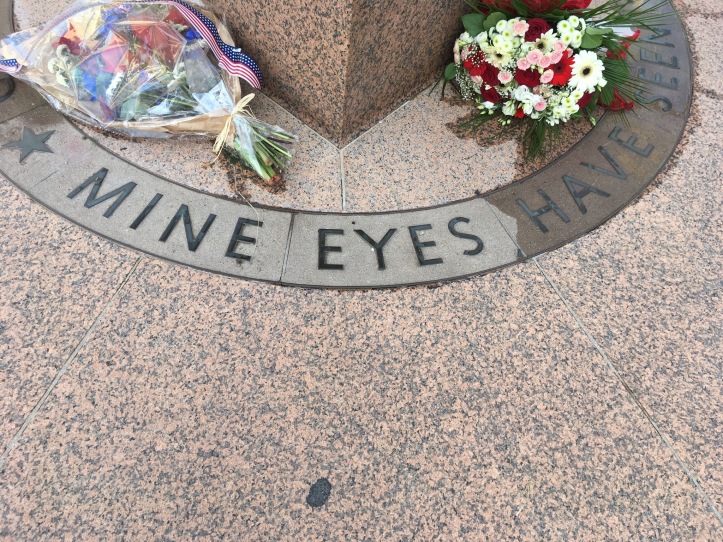
Finally, there was a schematic of the D-Day battle plan on a nearby wall. We wished we had seen this earlier as we would have liked to study it more.

But it was time to go. We had to travel a bit more to our new hotel for the next two nights. It was the Les Ormes in Barneville-Carteret, right across from the harbor. Our group had a fairly raucous dinner there that night, likely in response to the solemnity we had felt all day.

We won’t forget this place soon either. Ross had lost his watch charger, probably in Switzerland, and a young woman who worked there offered him her husband’s charger – he worked there too – to use overnight. The kindness of strangers.